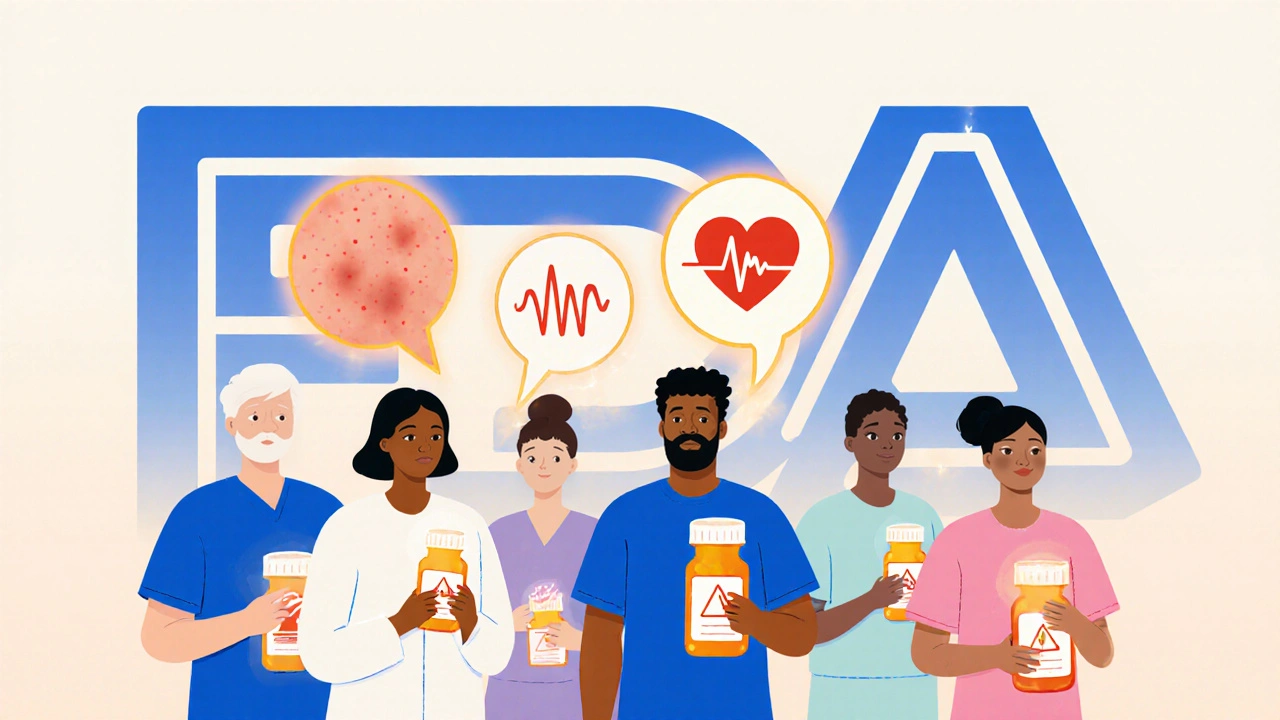Rare Drug Reactions: What They Are, Why They Happen, and How to Stay Safe
When your body reacts in ways no one expects to a medication you’ve taken before without issue, you’re experiencing a rare drug reaction, an unpredictable and often severe response to a medication that isn’t listed in standard side effect profiles. Also known as idiosyncratic reactions, these events don’t follow the usual rules — they can strike suddenly, even after years of safe use, and aren’t tied to dosage. Unlike common side effects like drowsiness or nausea, rare drug reactions can include skin blistering, liver failure, or sudden drops in blood cell counts — and they’re often missed until it’s too late.
These reactions aren’t random. They’re linked to how your genes process drugs, your immune system’s sensitivity, or dangerous combinations with other meds. For example, warfarin, a blood thinner used to prevent clots can trigger dangerous bleeding when mixed with certain antibiotics, medications that alter how warfarin is broken down in the liver. That’s why checking your INR isn’t just routine — it’s a life-saving check when you’re on both. Similarly, first-generation antihistamines, like Benadryl, which block histamine to reduce allergies can cause confusion or memory loss in older adults because they cross the blood-brain barrier and interfere with acetylcholine — a chemical critical for thinking. These aren’t just side effects; they’re hidden risks built into common prescriptions.
Some reactions are tied to specific genes. Others flare up after infections, stress, or when multiple drugs pile up. Aspirin, for instance, might slow wound healing not because it’s toxic, but because it interferes with the body’s natural inflammation process — a key step in repair. And while most people take metoclopramide for nausea without issue, a small number develop involuntary muscle spasms or tremors that can become permanent. These aren’t failures of the drug — they’re failures of prediction. We don’t yet have a perfect way to know who’s at risk, but we do know the warning signs: unexplained rashes, fever without infection, yellowing skin, sudden fatigue, or strange movements. If something feels off after starting a new med, don’t wait. Document it. Talk to your doctor. Bring a list of everything you’re taking — even supplements.
The posts below dig into real cases where rare drug reactions turned dangerous — and how people found safer paths forward. You’ll find deep dives into how antibiotics mess with blood thinners, why some sleep aids are riskier than they seem, and what alternatives actually work when the usual options backfire. These aren’t theoretical warnings. They’re stories from people who lived through it — and the science behind how to avoid the same fate.

When to Report Rare Side Effects from Generic Medications
- Nov, 14 2025
- Daniel Remedios
- 10 Comments
Learn when and how to report rare side effects from generic medications. Understand what counts as serious, how to submit a report to the FDA, and why your voice matters for drug safety.
